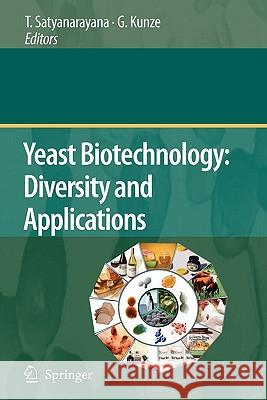Yeast Biotechnology: Diversity and Applications » książka
Yeast Biotechnology: Diversity and Applications
ISBN-13: 9789048178339 / Angielski / Miękka / 2010 / 744 str.
This book updates the knowledge that we have accumulated over the last couple of decades on yeast research. The yeasts are eukaryotic unicellular microfungi that are widely distributed in the natural environment, and can also be found in more specialized or extreme environments, such as low temperatures, low oxygen availabilities and water potential. Approximately 1500 species of yeasts belonging to over 100 genera have been described so far. Although the vast majority of yeasts are beneficial to human life, only a few are opportunistic human pathogens. Yeasts play an important role in the food chain, and in the carbon, nitrogen and sulphur cycles. In addition, yeasts (e.g. Saccharomyces cerevisiae, Hansenula polymorpha, Pichia pastoris) are now being used to express foreign genes for producing human proteins of pharmaceutical interest.
A landmark in biotechnology was reached in 1996 with the completion of the sequencing of the entire genome of S. cerevisiae and the genome sequencing of three more yeasts (Schizosaccharomyces pombe, Candida albicans and Cryptococcus neofromans) have recently been completed. Saccharomyces cerevisiae has now become a central player in the development of an entirely new approach to biological research - systems biology. The products of modern yeast biotechnology impinges on many commercially important sectors including foods, beverages, chemicals, pharmaceuticals, industrial enzymes, agriculture and environmental bioremediation.
This book is aimed at bringing together and updating the latest information on the diversity of yeasts under natural and extreme environments, their ecology and adaptations, taxonomy and systematics, physiology and biochemistry, as well as their molecular features and biotechnological applications.











